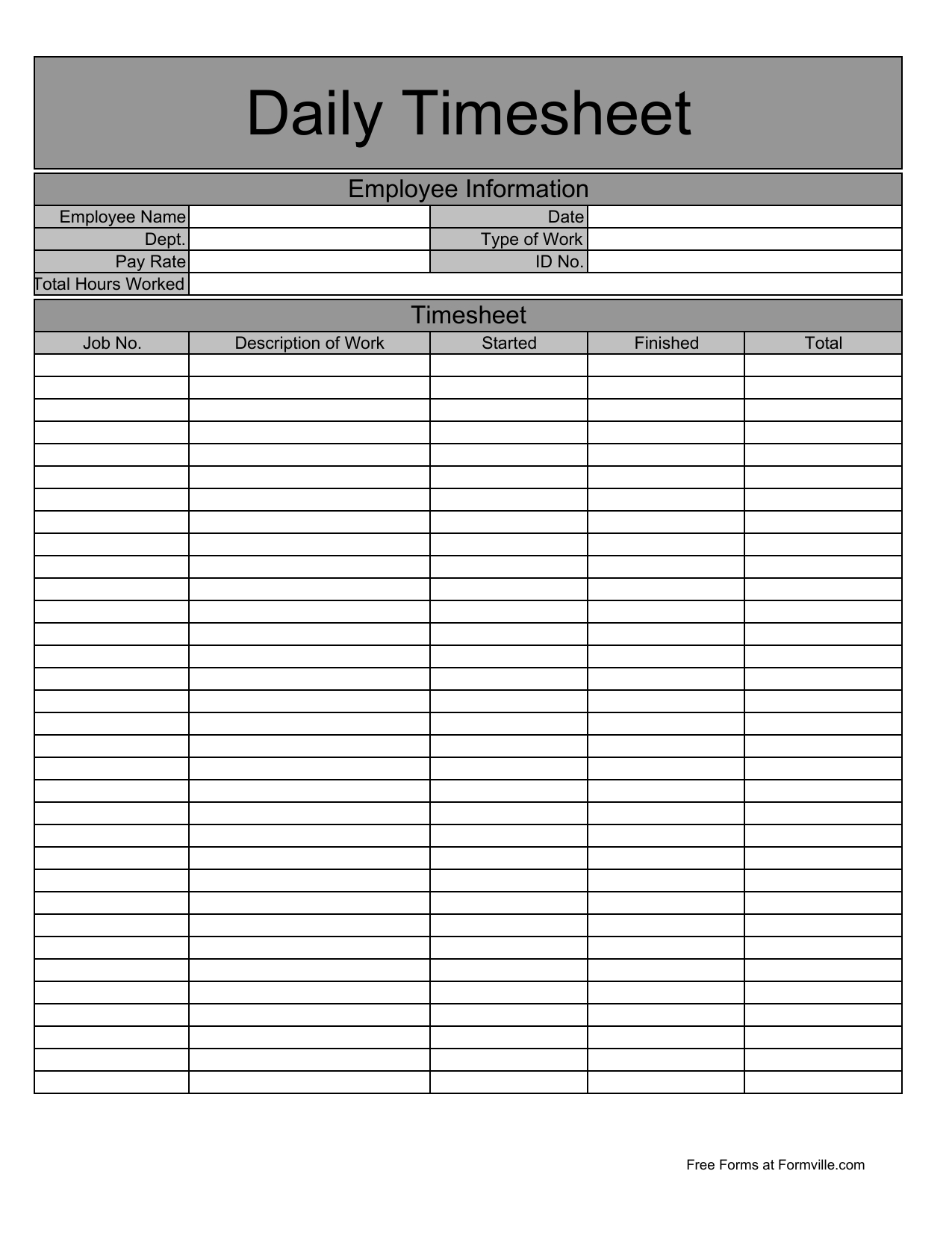
Once you have created your template it is essential to implement it properly by training employees on its use and addressing any questions they may have. It requires careful consideration of the format, time periods, categories, break times, projects or tasks to be tracked, approval process and customization for improved user experience. ConclusionĬreating a daily timesheet template is an important step in tracking employee work hours and ensuring accurate remuneration. Address any questions or concerns they may have to ensure smooth implementation and increase employee buy-in. Proper implementation and training ensure effective use and adoption of the timesheet template.ĭistribute the template among employees and conduct a training session to explain the purpose, importance, and process of accurately filling out the timesheet.

Implement the Template and Train Employees Making the template visually appealing and relevant improves user experience and encourages consistent use. Customize and Personalize the TemplateĪ customized and personalized template ensures a seamless user experience and improved performance.Īdd any additional information, such as employee IDs, department names, or contact information, and customize the look and feel to suit your company’s branding. The approver can either approve or reject the submitted timesheet after verifying its accuracy, ensuring that employees are accountable for their time tracking. Incorporate an approval section in your daily timesheet template for employees to submit their timesheets to supervisors or managers for review. Include an Approval ProcessĪn approval process ensures accountability, accuracy, and timely reporting. This will allow management to analyze project-specific time allocation and help in identifying areas requiring improvement or adjustments. Tracking time spent on specific projects or tasks helps in evaluating employee productivity and project budgeting.Ĭreate additional rows for employees to record time spent on specific projects or tasks.

Incorporate the break times in your total hours worked calculations to determine actual time worked accurately. This could be lunch breaks, or shorter rest breaks during the day. Include columns for recording employee break times. Add Break Timesĭeducting break times from total work hours ensures accurate remuneration and adherence to labor laws. Ensure you take into account different categories such as regular, overtime, and break hours. Calculate Total Hours WorkedĪccurate calculation of hours worked by employees is essential for compensation and productivity analysis.Ĭreate a formula in your chosen template (e.g., Excel or Google Sheets) to calculate the total hours worked by subtracting the “Time In” from the “Time Out” for each day. They will input when they start and end work, making it easier to calculate their total daily working hours. Recording the actual time of starting and ending work helps in calculating total hours worked accurately.Ĭreate a column for “Time In” and another for “Time Out” for employees to record their work hours. Create separate columns for different categories, such as regular hours, overtime hours, and vacation or sick leave to track employee work accurately. Define the time periods (days, weeks, or months) for which data will be collected. Set up the rows and columns of your timesheet to capture daily data.

Organizing time entries by categories helps in better analysis and efficient allocation of resources. Consider the compatibility of your choice with your organization’s existing systems. Excel and Google Sheets are popular choices due to their easy accessibility and customizability. The format determines the ease of access, customizability, and user experience when using the timesheet.Ĭhoose between various formats like Excel, Google Sheets, or a specialized timesheet application. How Can I Create A Daily Timesheet Template?: Step-by-step Guide 1. By following these steps carefully you can ensure your organization has a reliable system of tracking employee working hours efficiently. We’ll cover topics such as choosing an appropriate format, defining time periods and categories, adding time in/out sections, calculating total hours worked, allocating rows for projects or tasks, including an approval process, customizing and personalizing the template as well as implementing it with employees. In this blog post, we will discuss the steps to create a comprehensive timesheet that captures all relevant data accurately. Creating an effective daily timesheet template is essential for tracking employee work hours and analyzing productivity.


 0 kommentar(er)
0 kommentar(er)
